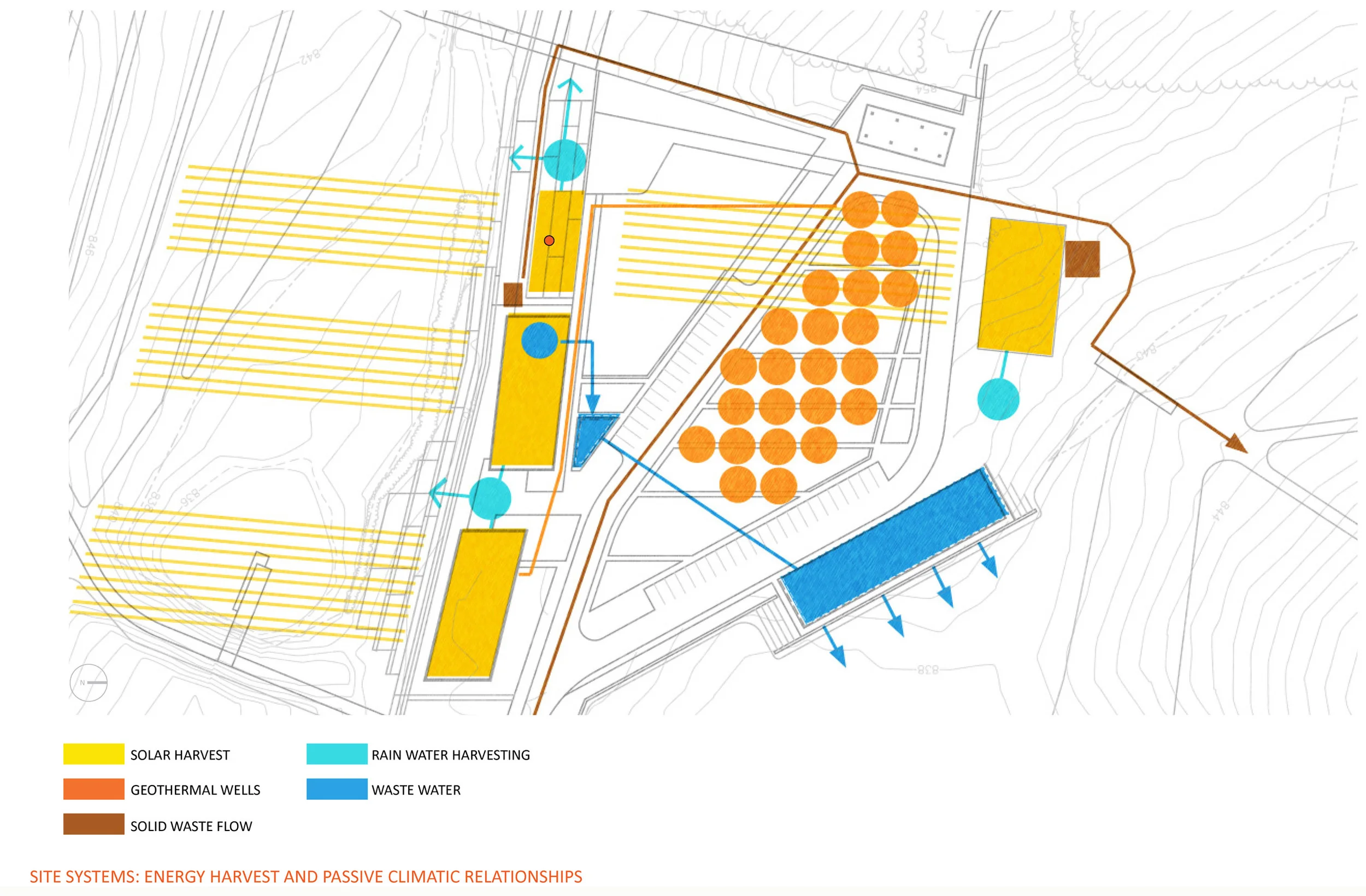











Adrian, MI
with SHW Architects
The Lenawee Intermediate School District (LISD) Center for a Sustainable Future is a proposed learning center for southeastern Michigan’s agricultural and natural resources community.
The master plan revolves around four key principles: energy conservation; carbon footprint stabilization; soil conservation; and restoration of native landscape ecologies. Pairing these three principles with a distinct focus on education, innovative agriculture, sustainability, and community outreach, the proposed site master plan provides an integrated solution offering the flexibility to provide relevant and accessible information into the future.
The site plan grew out of a series of design workshops undertaken with stakeholders, students and community members and is focused on making site systems clear and legible to visitors in keeping with the educational mission of the Center.
